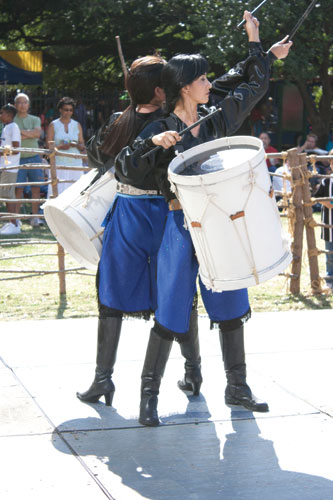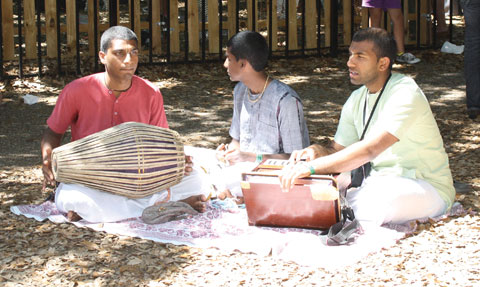
Houston named most diverse city in U.S.

Tracie Momie
The Signal
Houston was named the most diverse city in the United States based on a recent report from Rice University’s Kinder Institute for Urban Research and the Hobby Center for the Study of Texas using census data from 1999, 2000 and 2010.
The Kinder Institute for Urban Research and the Hobby Center for the Study of Texas are organizations on the campus of Rice University that conduct scientific research and sponsor education programs to help advance the understanding of pressing urban issues and promote the development of more sustainable cities in Texas the nation. Researchers from both organizations collaborated to compile the data.
Results from the study show the city is comprised of 45.3 percent White (Anglo), 37.6 percent Hispanic, 11.5 percent African American, 3.8 percent Asian, 0.3 percent American Indian and Alaskan natives, 1.3 percent persons reporting two or more races, 0.1 percent Hawaiian or Pacific Islander, and 0.1 percent persons claiming “other.”
Houston has surpassed Los Angeles and New York as the most ethnically diverse metropolitan area in the United States. Diversity has played a major part in Houston’s transition from its beginnings as a rural town to a sophisticated, urban city.
“The biggest value of diversity is that different backgrounds bring strength to communities, different values and voices,” said Junia Howell, researcher for the Kinder Institute. “It’s also a reminder of how small we are, we don’t know everything and there is so much to learn and to gain. We become better people and a better community when we interact with others.”
Houston is comprised of many different cultures working together but it is through the initiatives of organizations that focus on meeting the specific needs of their particular demographic that communities find strength and support, so that they are able to contribute to the progress of the city as a whole.
One such organization is the Asian Chamber of Commerce, which has the dual purpose of promoting trade between Houston and Asia and to foster economic development in the Houston area Asian-American communities. This relationship reflects the importance of working together.

“Diversity isn’t always about race,” said Linda Toyota, president of the Asian Chamber of Commerce. “It’s about learning from people who have different thoughts and beliefs. We should be inclusive but open to new ideas.”
The city of Houston is not only known for its business enterprise and civic organizations but also its thriving entertainment industry, which includes sport franchises, restaurants, museums and a world renown theatre district.
The Ensemble Theatre was founded in 1975 by the late George Hawkins to preserve the African-American artistic expression and enlighten, entertain and enrich the community. The Ensemble employs a diverse group of actors, directors, designers and production staff.
“Art has a big influence on diversity because art often speaks to social issues,” said Eileen Morris, artistic director for the Ensemble. “When people see or experience art they impact change because it feeds their soul and it helps heal the human spirit.”
The shift in immigration, along with a decrease in segregation between ethnic groups, has contributed significantly to the ethnically diverse composition of the city today. However, not all of the diversity is concentrated in urban sectors of Houston. The report also found that two suburbs of Houston, Pearland and Missouri City, are the most diverse in the region and are statistically less segregated than the city at large.
As diversity in suburban areas continues to grow, there will be an even more diverse population on school and college campuses. To help support the various multi-cultural students on the UHCL campus, there are several student organizations that promote diversity and inclusion. To find out more about these organizations you can log on to the UHCL homepage and click on “Campus Life.”
“When students feel included and represented on campus, they feel empowered and excel in their education,” said Sheerekha Subramanian, assistant professor of humanities and faculty adviser for the Indian Students Association.
These campus organizations rely on student leadership and encourage students to belong. The Intercultural and International Student Services (IISS) office champions diversity on the UHCL campus despite its many challenges.
“My mission is to ensure that every student who comes to this university is successful academically and socially,” said Linda Bullock, assistant dean of student diversity and director of intercultural and international student services. “The IISS office has a great staff who plan, develop and manage programs that are designed to make sure we have a welcoming environment for all of our students.”
Photos and slideshow by The Signal reporter Theresa Greenshields.

[…] To read The Signal reporter Tracie Momie’s article about diversity in Houston, click here. […]